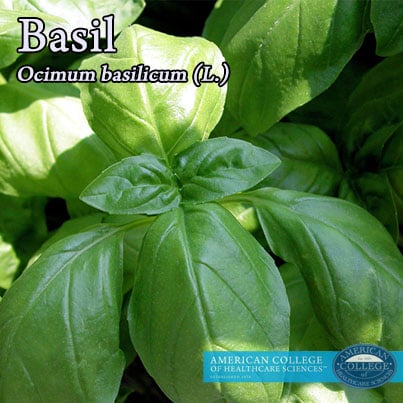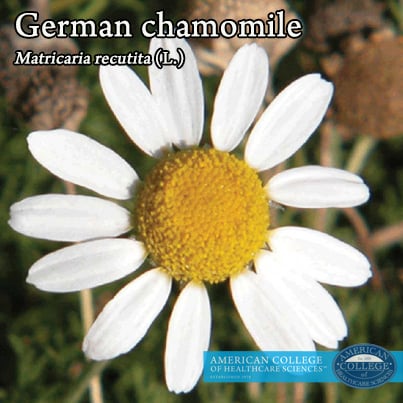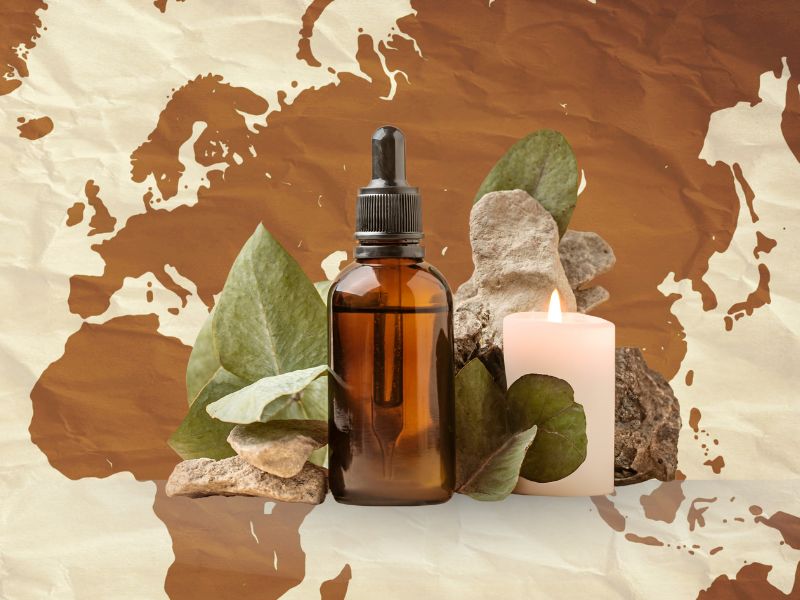Tomorrow is HerbDay, and we’re celebrating all things herbs with our friends at the American Herbalist Guild, the American Botanical Council, United Plant Savers, and all the other wonderful herbal organizations here in the States. We’d love for you to join in the festivities!
HerbDay is dedicated to education surrounding herbs and herbal medicine Whether you’re a master herbalist or just an herb enthusiast, keeping track of therapeutic action terms can be a tricky business! Even after completing an herbal medicine degree, it’s helpful to keep a simple cheat sheet handy. So while you drink your tea or enjoy the view of your new herb garden, here are 20 herbal medicine terms that you should know.
1. Adjuvant (Ad’ju-vant):
An herb that is added to a formula because it aids the effect of the principle ingredient.
- cayenne Capsicum annuum (L.)
- ginger Zingiber officinale (Roscoe)
2. Anodynes (An’o-dine):
Herbs used to relieve pain.
- chamomile Chamaemelum nobile (L.) All.
- calendula Calendula officinalis (L.)
- mullein Verbascum thapsus (L.)
- mustard Brassica juncea (L.) Czern.
- passionflower Passiflora incarnate (L.)
- peppermint Mentha piperita (L.)
- stinging nettle Urtica dioica (L.)
- tomato tops and ripe fruit pulp Solanum lycopersicum (L.)
- valerian Valeriana officinalis (L.)
- wormwood (oil) Artemesia absinthium (Linn.)
 3. Antiemetics (An”te-e-met’ik):
3. Antiemetics (An”te-e-met’ik):
Herbs used to lessen nausea and prevent or relieve vomiting.
- cayenne C. annuum
- crampbark Viburnum opulus (L.) (pregnancy)
- goldenseal Hydrastis canadensis (L.)
- cloves Eugenia caryophyllata (Thunb.)
- fennel Foeniculum vulgare (Hill)
- lavender Lavandula angustifolia (Mill.)
- peach leaves Prunus persica (L.)
- peppermint M. piperita
- spearmint Mentha spicata (L.)
- sweet basil Ocimum basilicum (L.)
4. Antimycotics (An”te-mi-kot-ik):
Herbs that discourage fungal growth.
- garlic Allium sativum (L.)
- yellow dock Rumex crispus (L.)
5. Antiphlogistics (An”te-flo-jis’tik ):
Herbs used to reduce inflammation or swelling.
- burdock root Arctium lappa (L.)
- chickweed Stellaria media (L.)
- comfrey Symphytum officinale (L.)
- elder flowers and leaves Sambucus nigra (L.)
- slippery elm Ulmus rubra (Muhl.)
6. Antipyretic (An”te-pi’ret’ik):
Herbs used to support normal body temperature.
- elder flowers S. nigra
- yarrow Achillea millefolium (L.)
 7. Astringents (As-trin’jent):
7. Astringents (As-trin’jent):
Herbs that contract tissues, make them denser and firmer, and arrest discharges.
- cayenne C. annuum
- mullein V. thapsus
- red raspberry Rubus idaeus (L.)
- shepherd’s purse Capsella bursa-pastoris (L.) Medik.
- witch hazel Hamamelis virginiana (L.)
8. Balsamic (Bawl-sam’ik):
Herbs that soothe inflamation.
- avocado Persea Americana (Mill)
- clary sage Salvia sclarea (L.)
9. Calmative (Kahm-ah-tiv):
Herbs that have a sedative action, allaying excitement.
- German chamomile Matricaria recutita (L.)
10. Cell Proliferants (Sel pro-lif’-er’ant):
Herbs that promote immunity and restoration.
- comfrey S. officinale
11. Cordials (Kord’yal):
Herbs that combine the properties of cardiac stimulant and being warming to the stomach.
- borage Borago officinalis (L.)
- chamomile C. nobile
- lemon grass Cymbopogon citratus (DC.) Stapf
- rosemary Rosmarinus officinalis (L.)
- yarrow A. millefolium
12.  Demulcents (De-mul’sent):
Demulcents (De-mul’sent):
Herbs having mucilaginous properties that are soothing and protective internally to irritated and inflamed surfaces and tissues.
- blue cohosh Caulophyllum thalictroides (L.) Michx.
- chickweed S. media
- comfrey root S. officinale
- marshmallow Althaea officinalis (L.)
- mullein V. thapsus
- slippery elm U. rubra
13. Emetics (e-met’ik):
Herbs that induce vomiting and cause an evacuation of stomach contents.
- black cohosh Cimicifuga racemosa (L.) Nutt. (overdose)
- cayenne C. annuum (overdose)
- elecampane Inula helenium (L.) (overdose)
- lobelia Lobelia inflate (L.)
14. Hypnotics (Hip-not’ik):
Herbs that are powerful nervine relaxants and support healthy sleep.
- mistletoe Viscum album (L.)
- passion flower P. incarnate
- valerian V. officinalis
15. Nephritics (Ne-frit’ik):
Herbs that have a beneficial influence on the kidneys.
- cayenne C. annuum
- cornsilk Zea mays (L.)
- couchgrass Agropyron repens (L.) P.Beauv.
- uva ursi Arctostaphylos uva-ursi (L.)
16. Nutritives (Nu’tri-tiv):
Herbs that nourish and build the body.
- comfrey S. officinale
- mullein V. thapsus
- slippery elm U. rubra
- sage Salvia officinalis (L.)
- sweet basil O. basilicum
- watercress Nasturtium officinale (W.T. Aiton)
17. Orexigenics (o-rek’si-jen’ik):
Herbs that increase or stimulate the appetite. More powerful than an appetizer.
18. Refrigerants (Re-frij’er-ant):
Herbs that have cooling properties and relieve thirst.
- borage B. officinalis
- burnet Pimpinella saxifrage (L.)
- chickweed S. media
- cleavers Galium aparine (L.)
- elder flowers S. nigra
- strawberries Fragaria vesca (L.)
19. Tonics (Ton’ik):
Herbs that stimulate, energize, and strengthen the body.
- chicory Cichorium intybus (L.)
- comfrey S. officinale
- dandelion Taraxacum officinale (F.H.Wigg.)
- sarsaparilla Smilax ornata (Hook.)
- thyme Thymus vulgaris (L.)
- yarrow A. millefolium
20. Vermifuge (Ver-mi’fuge):
Herbs used to expel worms.
- aloe Aloe barbadensis (Mill.)
- blue cohosh C. thalictroides
- hyssop Hyssopus officinalis (L.)
- mandrake Podophyllum peltatum (L.)
- tansy Tanacetum vulgare (L.)
- wormwood A. absinthium
While this is not an exhaustive list of herbal therapeutic action terms (that would require a really really long blog post!), I hope it will be useful to you in your herbal education and get you psyched for all the HerbDay festivities!
Does HerbDay and this list have you excited to study alternative herbal medicine? If you’re thinking about your options for herbal medicine school, don’t forget to check out the Master Herbalist program, Master of Science in Herbal Medicine, and other herbal medicine programs from the American College of Healthcare Sciences.
How will you be celebrating HerbDay this year? Tell me in the comments!
Disclosure of Material Connection: I am the CIO of American College of Healthcare Sciences, the Institution that publishes this blog. However, all opinions are my own and I only recommend products and services that I personally have reviewed and believe will be good for my readers. Some of the links in the post above are “affiliate links.” This means if you click on the link and purchase the item, I may receive an affiliate commission. Regardless, I only recommend products or services I use personally and believe will add value to my readers. I am disclosing this in accordance with the Federal Trade Commission’s 16 CFR, Part 255: “Guides Concerning the Use of Endorsements and Testimonials in Advertising.”
This article is for informational purposes only. It is not intended to treat, diagnose, cure, or prevent disease. This article has not been reviewed by the FDA. Always consult with your primary care physician or naturopathic doctor before making any significant changes to your health and wellness routine.
Editor’s note: This blog post was updated in May 2017.




